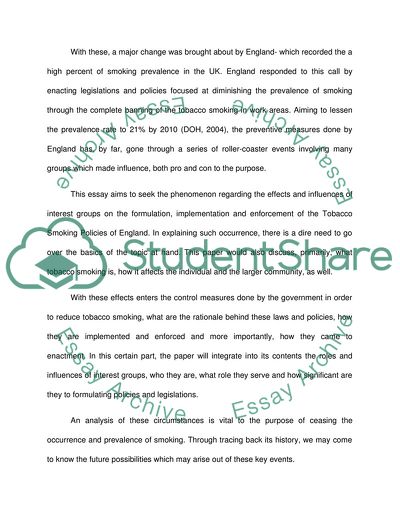Cite this document
(“Tobacco Smoking Policies in England Essay Example | Topics and Well Written Essays - 3000 words”, n.d.)
Retrieved from https://studentshare.org/sociology/1542792-critically-examine-the-role-and-influnce-of-interest-groups-in-the-formulation-and-implementation-of-tobacco-control-policy-and-legislation-in-england
Retrieved from https://studentshare.org/sociology/1542792-critically-examine-the-role-and-influnce-of-interest-groups-in-the-formulation-and-implementation-of-tobacco-control-policy-and-legislation-in-england
(Tobacco Smoking Policies in England Essay Example | Topics and Well Written Essays - 3000 Words)
https://studentshare.org/sociology/1542792-critically-examine-the-role-and-influnce-of-interest-groups-in-the-formulation-and-implementation-of-tobacco-control-policy-and-legislation-in-england.
https://studentshare.org/sociology/1542792-critically-examine-the-role-and-influnce-of-interest-groups-in-the-formulation-and-implementation-of-tobacco-control-policy-and-legislation-in-england.
“Tobacco Smoking Policies in England Essay Example | Topics and Well Written Essays - 3000 Words”, n.d. https://studentshare.org/sociology/1542792-critically-examine-the-role-and-influnce-of-interest-groups-in-the-formulation-and-implementation-of-tobacco-control-policy-and-legislation-in-england.


